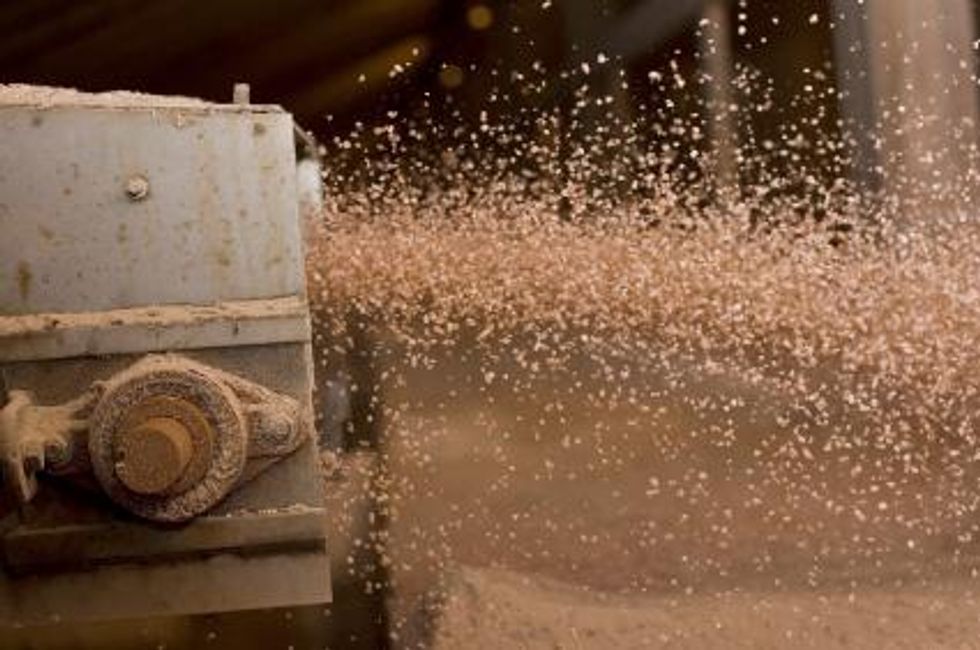- AustraliaNorth AmericaWorld
Investing News NetworkYour trusted source for investing success
- Lithium Outlook
- Oil and Gas Outlook
- Gold Outlook Report
- Uranium Outlook
- Rare Earths Outlook
- All Outlook Reports
- Top Generative AI Stocks
- Top EV Stocks
- Biggest AI Companies
- Biggest Blockchain Stocks
- Biggest Cryptocurrency-mining Stocks
- Biggest Cybersecurity Companies
- Biggest Robotics Companies
- Biggest Social Media Companies
- Biggest Technology ETFs
- Artificial Intellgience ETFs
- Robotics ETFs
- Canadian Cryptocurrency ETFs
- Artificial Intelligence Outlook
- EV Outlook
- Cleantech Outlook
- Crypto Outlook
- Tech Outlook
- All Market Outlook Reports
- Cannabis Weekly Round-Up
- Top Alzheimer's Treatment Stocks
- Top Biotech Stocks
- Top Plant-based Food Stocks
- Biggest Cannabis Stocks
- Biggest Pharma Stocks
- Longevity Stocks to Watch
- Psychedelics Stocks to Watch
- Top Cobalt Stocks
- Small Biotech ETFs to Watch
- Top Life Science ETFs
- Biggest Pharmaceutical ETFs
- Life Science Outlook
- Biotech Outlook
- Cannabis Outlook
- Pharma Outlook
- Psychedelics Outlook
- All Market Outlook Reports
PotashCorp’s earnings outlook cut is causing investors to question the future of the potash market.
Last week, PotashCorp informed investors that its upcoming third-quarter profit outlook is expected to fall at the bottom end of the $2.80 to $3.20 earnings per share range that it announced back in July.
The news was unsurprising to those watching the potash situation closely as PotashCorp shares gained two cents on the announcement, closing at $41.12.
Unsettled contracts with India and China have played a key role in the company’s recent dive in value; rising North American potash stocks indicate that demand from these markets has not been as great as was expected.
The delayed Asian contracts recently forced the company to cut output at its Rocanville and Lanigan operations for eight weeks starting in mid-November. That will remove approximately 1 million tonnes of production from the markets.
PotashCorp is facing strong headwinds — falling potash spot prices and rising North American potash stocks have left the company unlikely to attain the $470/tonne contract price it achieved for its recent contract with China.
CIBC World Markets analyst Jacob Bout and Edlain Rodriguez of Lazard Capital Markets both cut their ratings on PotashCorp earlier this month on expectations of significantly lower volumes in the upcoming quarter due to the fact that China and India have indicated that they are unlikely to settle contracts with the company any time soon.
Mosaic (NYSE:MOS) has fared slightly better than PotashCorp, but it is facing similar challenges in gaining Chinese and Indian demand. Mosaic also cut production earlier this year, dropping from 1.9 million tonnes to 1.5 million tonnes in its Q1 2013 operations as a result of longer planned turnarounds and weak international demand for standard product, a company press release states.
Fellow Canpotex partner Agrium (TSX:AGU,NYSE:AGU) has done significantly better thanks in great part to its diversified business line. Agrium’s nitrogen business, which accounts for about one-third of its earnings, is expected to leave the company at about the same value as the year before when earnings are reported on November 7.
While some commentators have suggested that the chill in contract settlements demonstrates a small falling from grace for North American Canpotex potash companies, Russian-based Uralkali (LSE:URKA), the world’s largest potash producer by output, has also cut its 2012 production target by 7 percent in the wake of deferred Chinese contracts.
Long-term rules
Although some of PotashCorp’s perceived invincibility has begun to wear off, the company maintains that it has simple mathematics on its side.
“There’s too many people that need to eat and the world is still growing despite some of the macro issues now and we see a very strong year in 2013 and 14,” CEO Bill Doyle told a local Saskatchewan radio station recently.
The world’s middle class — much of which is in Asia — is still projected to double to 4.9 billion by 2030, increasing global food demand by 50 percent in the next two decades.
Further, as potash is an exhaustible nutrient that is extracted from the soil as food is harvested, countries can only sustain a potash “holiday” for so long. As long as industrial-scale crop production continues to feed food and energy systems, these crops will require potash-based fertilizers.
Juniors gaining support
Despite the troubles faced by potash majors in the near term, investment in new potash resources continues to make headway.
Denver, Colorado-based junior Prospect Global Resources (NASDAQ:PGRX) is a testament to the available opportunities. The company recently announced that it reached a US$2 billion agreement with a Chinese chemical company to provide 500,000 tonnes of potash for a 10-year period beginning in 2015.
The company’s future operations in Holbrook, Arizona have received only $75 million of the estimated $1 billion required to get the project off the ground, but a long-term offtake agreement will likely help financing efforts.
The company also filed a recent report stating that its 2012 cost projections put it in a position to produce a bankable feasibility study in 2013. Total indicated and inferred potassium chloride resources for the project stand at 40 million tonnes and 83 million tonnes respectively.
Securities Disclosure: I, James Wellstead, hold no direct investment interest in any company or commodity mentioned in this article.
Investing News Network websites or approved third-party tools use cookies. Please refer to the cookie policy for collected data, privacy and GDPR compliance. By continuing to browse the site, you agree to our use of cookies.
